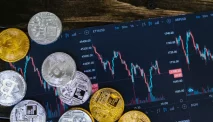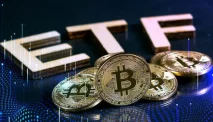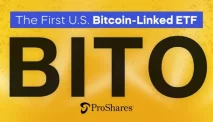Diksia.com - TRON is a decentralized blockchain-based operating system that aims to decentralize the internet and make it more accessible to everyone. It was founded in 2017 by Justin Sun, and its native token is TRX.
In this article, I will introduce you to TRON, a decentralized platform for the future of content creation and consumption. TRON is a blockchain-based operating system that aims to empower content creators and consumers with full ownership and rewards.
Learn more about TRON’s history, technology, market, and investment potential in the following sections.
Introduction
TRON is a decentralized blockchain-based operating system that aims to create a free, global digital content entertainment system with distributed storage and high scalability. The TRON network is based on the TRON Protocol, which is a high-throughput, high-scalability, and high-availability blockchain protocol.
TRON Details:
| Specification | Value |
|---|---|
| Name | TRON |
| Symbol | TRX |
| Launch Date | September 2017 |
| Consensus Algorithm | Delegated Proof of Stake (DPoS) |
| Block Time | 3 seconds |
| Blockchain | TRON |
| Algorithm | Proof-of-Stake |
| Total supply | 100 billion |
| Circulating supply | 66.7 billion |
| Website | tron.network |
| Market capitalization | $6.8 billion (as of March 8, 2023) |
| Trading volume | $1.5 billion (24h) |
| Top exchanges | Binance, Huobi Global, OKEx |
What is TRON?
TRON is a decentralized, blockchain-based operating system with smart contract functionality, proof-of-stake principles as its consensus algorithm and a cryptocurrency native to the system, known as Tronix (TRX).
TRON is a decentralized platform that aims to create a free and open internet for everyone. It does this by providing a decentralized platform for hosting applications and data. TRON also allows users to create their own tokens, which can be used to reward users for their contributions to the network.
TRON’s vision is to build a global digital content ecosystem that allows users to create, share, and monetize their content without intermediaries such as YouTube, Facebook, or Apple.
By leveraging blockchain technology, TRON aims to provide full ownership rights, fair distribution of rewards, and high scalability and security for content creators and consumers.
Who Are the Founders of TRON?
TRON was founded by Justin Sun, a former chief representative of Ripple in China and a protege of Jack Ma, the founder of Alibaba. Sun is also the founder of Peiwo, a social media app with over 10 million users. Sun is the CEO of the TRON Foundation, a non-profit organization that oversees the development and governance of the TRON network.
Other key members of the TRON team include Lucien Chen, the former CTO who designed the TRON protocol; Marcus Zhao, the head of the engineering team; and Yi He, the co-founder of Binance who joined TRON as an advisor.
Why is TRON Important?
TRON is important because it challenges the status quo of the centralized digital content industry, which is dominated by a few powerful platforms that control the distribution and monetization of content.
These platforms often take a large cut of the revenue generated by content creators, censor or manipulate content according to their own agendas, and collect massive amounts of user data without consent.
TRON offers an alternative solution that empowers content creators and consumers with full ownership and rewards. By using blockchain technology, TRON enables users to create their own decentralized applications (dApps) that run on the TRON network and interact with smart contracts.
These dApps can offer various types of content services, such as streaming, gaming, social media, e-commerce, and more. Users can also directly reward content creators with TRX tokens or other digital assets issued on the TRON network.
What Makes TRON Unique?
TRON is unique because it combines several features that make it stand out from other blockchain platforms. Some of these features are:
- High performance: TRON claims to have a high throughput of up to 2,000 transactions per second (TPS), which is much faster than Bitcoin (7 TPS) or Ethereum (25 TPS). This allows for smooth and seamless user experience on the TRON network.
- Low cost: TRON has a low transaction fee of only 0.1% of one cent per transaction. This makes it affordable for users to access various content services on the TRON network.
- Scalability: TRON has a scalable architecture that consists of three layers: the storage layer, the core layer, and the application layer. The storage layer handles data storage and supports different types of consensus mechanisms. The core layer handles smart contracts, account management, and consensus. The application layer supports various dApps and protocols built on top of the core layer.
- Compatibility: TRON is compatible with Ethereum’s smart contract language Solidity and its virtual machine EVM. This means that developers can easily port their existing Ethereum dApps to the TRON network without much hassle.
- Ecosystem: TRON has a vibrant and diverse ecosystem that includes various partners, developers, investors, exchanges, media platforms, and community members. Some notable examples are BitTorrent, Opera Browser, Samsung Blockchain Keystore, Poloniex Exchange, CoinMarketCap Portal, DLive Streaming Platform, Steemit Blogging Platform, and more.
What are the key features of TRON?
Some of the key features of TRON are:
- TRX: The native cryptocurrency of the TRON network that serves as a medium of exchange and a store of value. Users can use TRX to pay for various content services on the TRON network, as well as to participate in the network governance and voting.
- TRON Power (TP): The staked version of TRX that gives users voting rights and influence over the network. Users can lock their TRX tokens in a process called freezing to obtain TP and vote for the super representatives (SRs) who run the network nodes and validate transactions.
- Super Representatives (SRs): The elected delegates who are responsible for the on-chain governance and maintenance of the TRON network. There are 27 SRs who are chosen by the TP holders every 6 hours. Each SR receives rewards in TRX for their contribution to the network.
- TRON Virtual Machine (TVM): The lightweight and compatible virtual machine that executes smart contracts on the TRON network. TVM supports multiple programming languages, such as Solidity, Java, Python, and more.
- TRON Network Protocol (TNP): The protocol that defines the rules and standards for communication and interaction on the TRON network. TNP consists of four sub-protocols: account protocol, transaction protocol, consensus protocol, and data protocol.
- TRON Decentralized Exchange (TRX Market): The decentralized exchange that allows users to trade various digital assets issued on the TRON network, such as TRC10 and TRC20 tokens. Users can create their own tokens and list them on the exchange without any intermediaries or fees.
TRON History
How did TRON come about?
TRON was founded by Justin Sun in September 2017 as a project that aims to decentralize the web and empower content creators and consumers. Sun was inspired by the vision of a free and open internet that was advocated by Tim Berners-Lee, the inventor of the World Wide Web.
Initially, TRX tokens were ERC-20-based tokens deployed on Ethereum, but a year later they were moved to their own network. In June 2018, TRON launched its mainnet and migrated its tokens from Ethereum to its own blockchain. In July 2018, TRON acquired BitTorrent, one of the largest peer-to-peer file-sharing platforms in the world, and integrated it into its ecosystem.
Since then, TRON has been developing and expanding its network and ecosystem with various initiatives, such as launching its own decentralized exchange, launching its own scaling solution called SUN Network, launching its own oracle service called WinkLink, launching its own DeFi platform called JustStable, launching its own social experiment token called SUN, and more.
What is the development roadmap for TRON?
TRON has a development roadmap that consists of six phases:
- Exodus: The phase that focuses on providing a free platform for peer-to-peer distribution, storage, and content creation.
- Odyssey: The phase that focuses on empowering content creators with incentives and rewards based on a proof-of-stake mechanism.
- Great Voyage: The phase that focuses on enabling content creators to issue their own personal tokens and launch their own crowdfunding campaigns.
- Apollo: The phase that focuses on enhancing the security and scalability of the network with a pluggable smart contract system.
- Star Trek: The phase that focuses on transforming the network into a decentralized gaming platform with online gaming and predictive markets.
- Eternity: The phase that focuses on creating a self-governing community with a developer-friendly ecosystem.
Who are the key people behind TRON?
Some of the key people behind TRON are:
- Justin Sun: The founder and CEO of TRON who is also the founder of Peiwo and a former chief representative of Ripple in China.
- Lucien Chen: The former CTO of TRON who designed the TRON protocol and left the project in 2019 due to disagreements with Sun.
- Marcus Zhao: The head of the engineering team who leads the development of the core technology of TRON.
- Yi He: The co-founder of Binance who joined TRON as an advisor in 2018.
- Roy Liu: The head of business development who oversees the global partnerships and strategic alliances of TRON.
TRON Technology
What is the underlying technology of TRON?
The underlying technology of TRON is based on blockchain technology, which is a distributed ledger that records transactions in a secure, transparent, and immutable way. Blockchain technology enables peer-to-peer transactions without intermediaries or central authorities.
TRON uses a modified version of blockchain technology that incorporates several innovations and features, such as:
- Delegated Proof of Stake (DPoS): A consensus algorithm that allows users to delegate their voting power to elect representatives who run the network nodes and validate transactions. DPoS is more efficient, democratic, and scalable than other consensus algorithms, such as Proof of Work (PoW) or Proof of Stake (PoS).
- TRON Network Protocol (TNP): The protocol that defines the rules and standards for communication and interaction on the TRON network. TNP consists of four sub-protocols: account protocol, transaction protocol, consensus protocol, and data protocol.
- TRON Virtual Machine (TVM): The lightweight and compatible virtual machine that executes smart contracts on the TRON network. TVM supports multiple programming languages, such as Solidity, Java, Python, and more.
- TRON Decentralized Exchange (TRX Market): The decentralized exchange that allows users to trade various digital assets issued on the TRON network, such as TRC10 and TRC20 tokens. Users can create their own tokens and list them on the exchange without any intermediaries or fees.
TRON Market
What is the current market capitalization of TRON?
The current market capitalization of TRON is about $4.6 billion USD as of August 4, 2023. This makes it the 16th largest cryptocurrency by market cap among over 10,000 cryptocurrencies in existence.
What is the trading volume of TRON?
The trading volume of TRON is about $1.2 billion USD as of August 4, 2023. This means that the amount of TRX tokens exchanged in the past 24 hours is equivalent to $1.2 billion USD. The trading volume reflects the liquidity and activity of a cryptocurrency in the market.
What are the top exchanges that list TRON?
TRON is listed on over 300 exchanges worldwide, which means that users can buy, sell, and trade TRX tokens with various fiat currencies and other cryptocurrencies. Some of the top exchanges that list TRON are:
- Binance: The world’s largest cryptocurrency exchange by trading volume and users. Binance offers multiple trading pairs for TRX, such as BTC/TRX, USDT/TRX, BNB/TRX, and more.
- Huobi: One of the leading global cryptocurrency exchanges that operates in over 170 countries. Huobi supports multiple trading pairs for TRX, such as HT/TRX, HUSD/TRX, ETH/TRX, and more.
- OKEx: A Malta-based cryptocurrency exchange that offers over 400 trading pairs for various cryptocurrencies. OKEx supports multiple trading pairs for TRX, such as OKB/TRX, USDT/TRX, BTC/TRX, and more.
TRON Investment
Is TRON a good investment?
TRON is a potential investment opportunity for those who are interested in the future of digital content creation and consumption. TRON has a strong vision, a large and active community, a diverse and growing ecosystem, and a high-performance and scalable network.
However, like any other cryptocurrency, TRON also has its risks and challenges. Some of the factors that may affect the price and value of TRON are:
- Market sentiment: The general mood and attitude of investors and traders towards cryptocurrencies can influence the demand and supply of TRX tokens. Positive news, events, or developments can boost the confidence and optimism of the market, while negative ones can cause fear and uncertainty.
- Competition: The cryptocurrency industry is highly competitive and dynamic, with new projects and innovations emerging every day. TRON faces competition from other blockchain platforms that offer similar or better solutions for digital content creation and consumption, such as Ethereum, EOS, Cardano, Polkadot, etc.
- Regulation: The legal and regulatory environment of cryptocurrencies varies from country to country and can have a significant impact on the adoption and growth of TRON. Some countries may impose restrictions or bans on cryptocurrencies or certain aspects of them, such as trading, mining, or ICOs. Other countries may adopt more favorable or supportive policies or frameworks for cryptocurrencies or certain aspects of them, such as taxation, licensing, or innovation.
- Innovation: The technological advancement and innovation of TRON can affect its competitiveness and attractiveness in the market. TRON needs to constantly improve its network performance, security, scalability, usability, and functionality to meet the needs and expectations of its users and developers. It also needs to keep up with the latest trends and developments in the industry, such as DeFi (decentralized finance), NFTs (non-fungible tokens), DAOs (decentralized autonomous organizations), etc.
What are the risks of investing in TRON?
Investing in TRON involves several risks that investors should be aware of before making any decisions. Some of these risks are:
- Volatility: The price of TRX tokens can fluctuate significantly in a short period of time due to various factors such as market sentiment, competition, regulation, innovation, supply and demand, etc. This means that investors may experience high returns or losses depending on the timing and direction of their trades.
- Hacking: The security of the TRON network and its users’ funds can be compromised by malicious actors who may attempt to hack, steal, or manipulate the network, the exchanges, the wallets, or the smart contracts. This may result in the loss or damage of TRX tokens or other digital assets stored or transacted on the TRON network.
- Scams: The TRON ecosystem and its users may be exposed to various scams or frauds that may try to deceive or exploit them for their own benefit. These may include fake or phishing websites, apps, or emails that may ask for personal or financial information, fake or fraudulent projects or tokens that may promise unrealistic returns or benefits, fake or malicious airdrops or giveaways that may require users to send TRX tokens or other digital assets to receive rewards, etc.
- Legal: The legal status and implications of investing in TRON may vary from country to country and may change over time. Investors may face legal issues or consequences if they violate any laws or regulations related to cryptocurrencies in their jurisdiction. These may include fines, penalties, taxes, confiscation, prosecution, imprisonment, etc.
How can I buy TRON?
There are several ways to buy TRON depending on your preference and convenience. Some of the common ways are:
- Exchanges: You can buy TRX tokens from various cryptocurrency exchanges that list TRON as one of their trading pairs. You will need to register an account on the exchange, verify your identity, deposit some fiat currency or cryptocurrency, and then place an order to buy TRX tokens. Some of the popular exchanges that offer TRX tokens are Binance, Huobi, OKEx, etc.
- Wallets: You can buy TRX tokens from various cryptocurrency wallets that support TRON and offer a built-in exchange service. You will need to download and install the wallet app on your device, create a wallet address, and then use the exchange feature to buy TRX tokens with fiat currency or cryptocurrency. Some of the popular wallets that offer TRX tokens are Trust Wallet, Exodus Wallet, Atomic Wallet, etc.
- Peer-to-peer (P2P): You can buy TRX tokens from other individuals who are willing to sell them directly to you without any intermediaries. You will need to find a seller who accepts your preferred payment method and currency, agree on a price and terms of trade, and then transfer the funds and receive the TRX tokens. Some of the platforms that facilitate P2P trading are LocalBitcoins, Paxful, LocalCryptos, etc.
Conclusion
TRON is a decentralized platform for the future of content creation and consumption. It aims to provide a global digital content ecosystem that allows users to create, share, and monetize their content without intermediaries. By using blockchain technology, TRON enables users to have full ownership and rewards for their content.
TRON has a strong vision, a large and active community, a diverse and growing ecosystem, and a high-performance and scalable network. However, it also faces several challenges and risks in the competitive and dynamic cryptocurrency industry.
TRON is a potential investment opportunity for those who are interested in the future of digital content creation and consumption. However, investors should also be aware of the risks and uncertainties involved in investing in cryptocurrencies.
If you want to learn more about TRON, you can visit its official website, follow its social media accounts, join its community forums, read its whitepaper, or explore its dApps.






